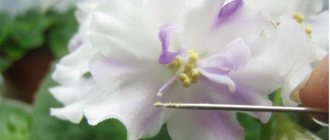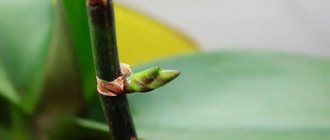Primula fine-toothed, like many other plants, has its own legends. The British believe that inside the thickets of these primroses live gnomes and fairies who decorate these plants with droplets of water. According to another belief, the Apostle Peter, who fell asleep at his post, accidentally dropped the keys to the gates of heaven. When they fell to the ground, they sprouted primroses, hence the local name for these flowers - “keys”.
Fine-toothed primrose has a rich palette of colors and shades: from white to purple. Here you can also see the small teeth along the edges of the flower petals, which give the name to the entire species of these primroses.
Primroses of this group are attractive for their unpretentiousness, ease of care, good winter hardiness and, of course, their April flowering, which can last up to forty days.
Description of the variety
Despite the wide variety of varieties, primroses have certain characteristics that unite its various variations:
- size - height from 15 to 30 cm, diameter 50–60 cm;
- family - primroses;
- leaves - at the beginning of growth they are not large 5-6 cm, by the end of the season they reach 30-35 cm, light green in color;
- stem - compact, straight;
- flower - forms inflorescences in the form of a ball, reaching 10–12 cm at the beginning of flowering and 40–50 cm at the end of summer, the size of one flower is from 1 to 3 cm, shades can be white, lilac, lilac, violet, ruby and blue;
- life time - from 3 to 4 years;
- flowering - from mid-April to early July;
- soil - moist, slightly acidic, light;
- Insolation of the area is partial shade; it may die under the sun.
This plant has several particularly common species that are worth considering in more detail.
Fine-toothed primrose is one of the species that has varieties with the following characteristics:
Pon-pon:
- size - height from 25 to 30 cm;
- leaves are wrinkled, large, reaching 30 cm by the end of the season, light green in color;
- stem - compact, straight;
- flower - forms inflorescences in the form of a ball of a standard size for primroses, the size of one flower is from 1 to 3 cm, shades can be white, dark blue, scarlet;
- life time - from 3 to 4 years;
- flowering - from mid-April to early July;
- the soil and insolation of the site are characteristic of primroses.
Primula Rubin:
- size - height from 25 to 30 cm;
- leaves are large, oval, oblong, finely toothed with wrinkles, reaching 25–30 cm by the end of the season, pale green in color;
- stem - compact, straight;
- flower - forms inflorescences in the form of a ball of a standard size for primroses, the size of one flower is from 6 to 10 cm, all shades of red, often ruby color;
- life time - from 3 to 4 years;
- flowering - from mid-April to early June;
- the soil and insolation of the site are characteristic of primroses.
The type of ear primrose is determined by the following parameters:
- size - height from 25 to 30 cm;
- leaves are small, dense, leathery, reaching 30–40 cm by the end of the season, gray-green in color;
- stem - compact, straight;
- flower - forms inflorescences in the form of a ball of a standard size for primroses, the size of one flower is from 3 to 5 cm, shades can be violet-brick and violet-blue;
- the peculiarity of the species is two-color flowers with a pale yellow circle in the middle;
- life time - from 3 to 4 years;
- flowering - from mid-April to early July;
- the soil and insolation of the site are characteristic of primroses.
Peculiarities
Primrose was given (and quite deservedly) the epithet “golden key of the green kingdom.”
Gold - for the color, and key - because this plant appears from under the snow almost before everyone else. It is not for nothing that the name “primrose” was also mentioned in traditional botanical descriptions. Yellow flower buds, grouped into umbrella inflorescences, look very elegant and attractive. Botanists classify primrose as a member of the primrose family. The foliage rises above the snow before other parts of the plant. It is wrinkled and heavily pubescent. Primrose greens are often called “lambs” for their characteristic appearance. The foliage develops almost from the very root and forms a rosette.
Primrose has stems, but they are invariably bare. Only the tips of the shoots smoothly turn into buds. There are some varieties of primrose in which the buds are not grouped into inflorescences. The shape of the buds themselves is geometrically correct. The edges of the petals in the initial part of the flower are fused, and closer to the edge they are already separated.
Both domestic and wild varieties of primrose are relatively low in size. Only a few of them exceed 0.3 m in height. This does not prevent the plant from forming lush “caps” of flowers with rich colors. When combined with brightly colored buds, the result is a plant that is very popular among gardeners.
But the advantages of primroses are not limited to their attractive appearance. This plant can even be used in folk medicine. If you collect the buds and put them in tea, you can get a drink with a pronounced calming effect. With the help of oil extracted from the roots and leaves, they successfully fight tuberculosis.
Primrose is used as a medicinal raw material and on an industrial scale. Capsules and ointments are prepared on its basis to help with eczema. Young leaves can be added to salad. Caucasian cuisine has a number of recipes for using primrose leaves in soups. The roots are often used to make spices.
Such a wide variety of properties of primrose was noticed by the ancient Greeks. They introduced it into culture and began to use it for culinary purposes. The Hellenes, interestingly, endowed the primrose with mystical properties. A number of myths and beliefs associated with it have existed almost to this day.
But what is beyond doubt is the honey-bearing properties of primrose. However, it is usually difficult for bees to get to areas where nectar is located. Especially if you mean wild plants. But among the artificially bred varieties there are those that have almost open buds. Wild primrose can be seen on the alpine slopes. It is also found in the temperate zone of both hemispheres.
Growing fine-toothed primrose from seeds
This plant reproduces in two ways:
- vegetative;
- sowing
In order to grow a new flower by dividing an adult plant, you need to have a front garden with these primroses in your garden. The sowing method is simpler. You just need to go to a specialized store and buy seeds and plant them in the garden.
Did you know? According to British legends, forest spirits live in this flower - creatures with wings that look like butterflies. They spend the whole summer there, decorating the primroses with drops of dew.
Sowing in the garden in the fall
Fine-toothed primrose should be sown at a shallow depth of 0.8 to 1.2 cm.
This is done as follows:
- You need to prepare a hole in the ground.
- Place the seeds in it at a distance of 0.5 cm.
- Cover the seed with a layer of 1-2 cm of fertile soil.
- Mulch with fallen leaves in a layer of no more than 5 cm.
In spring, only those seeds that have undergone natural stratification germinate. The main thing is that the autumn rains do not wash away the material from the beds. Primroses grown in this way should be replanted a year after sowing.
Important! If you sow seeds not in a garden bed, but in seedling boxes, then you should remember that the seed of this plant can only germinate in the dark.
Growing through seedlings
If this primrose is in one place for 3-4 years, then it becomes depleted and the flowers begin to become smaller. In order not to lose the planted plant, you need to divide the primrose vegetatively and transfer it to a new place . Dividing work should be carried out in mid-summer; after August 10–15, it is no longer worth doing it.
In order to propagate a plant vegetatively, you need to:
- Water the flower well.
- After the water is absorbed into the soil, dig up the plant.
- Wash the roots with water and divide them into several parts with a sharp tool.
- Treat the cut areas with wood ash.
- Replant the separated parts into a new bed.
When planting seedlings, several rules should be followed:
- There should be a distance of about 25–30 cm between the primroses in the flowerbed.
- The area on which the flowers will grow should be well moistened and in slight shade.
- The soil needs to be light, since in very loamy soil the flower may die.
- After planting the primrose, you need to mulch the soil to a depth of 5–7 cm with leaves or grass.
Important! In order for the primrose to take root normally and grow well in the future, the soil next to it must be constantly moist.
How to care for crops
Typically, containers with crops are kept on window sills. In winter, it is ideal to grow primrose seedlings in well-lit windows. But direct sunlight should not fall on the microgreenhouse. However, in winter there are not often sunny days, and the sun is not as bright as in spring and summer. As long as there are no green shoots on the soil surface, direct sunlight is not a big problem. As soon as the seedlings appear, shading from the bright sun is a must!
As soon as the seeds begin to germinate, we begin to carefully monitor the humidity on the surface of the soil: it should not dry out, but it should not be too wet. Sometimes, in order to create sufficient moisture for the crops, it is necessary to treat the inside surface of the transparent cover with water from a sprinkler. Watering should be done very carefully and moderately while the seedlings are small. As soon as they begin to grow, you need to water abundantly only as needed. Typically, gardeners use a sprinkler with a very fine spray of water for watering or water the seedlings from a syringe without a needle.
After the emergence of seedlings, you need to constantly open and ventilate the crops and make sure that the soil is moist, but not wet! Otherwise, the seedlings will rot instantly. You need to completely remove the transparent cover or film when the seedlings have 1-2 true leaves. And you need to remove the cover gradually. If mold appears on the surface, then dust the soil with ordinary river sand (well washed and disinfected). You can buy it in flower shops or prepare it yourself.
You can also fight mold with a solution of Maxim or Vitaros by carefully treating the surface of the soil with a syringe. Make sure that after treating with fungicide the soil in the bowl is not too wet.
Home care
If the fine-toothed primrose grows not in the garden, but at home in a pot, then it needs some care. The main thing is to comply with the following requirements:
- temperature regime;
- watering;
- lighting.
In addition, the plant should be in a pot with soil that suits it best. At the same time, the crop needs to be fed. Fertilize primrose 2 times . Immediately after transplantation - organic fertilizing: bone meal, compost or peat, and in the fall - ammonium nitrate.
Video: Spring care for fine-toothed primrose
Priming
For primroses, light, fertile soil is preferable . You can independently prepare a soil mixture from equal parts of peat and leaf soil and sand.
Soil with a high clay content is not suitable, because the plant may die . Such soil requires drainage from perlite or vermiculite, laid on the bottom of the pot in a layer of up to three centimeters.
Find out also about the varieties of primrose Ballerina.
Lighting
You need to choose a place in the house where you can provide the flower with diffused light. But this is ideal, and any area in an apartment with partial shade can be suitable, the main thing is that the primrose should not be exposed to direct sunlight . In this case, the primrose will delight with flowering from February to July.
Temperature
In order for the primrose to bloom for a long time, it should be kept in a place that is neither hot nor cold. The ideal temperature for a flower is from +8°C to +16°C.
Humidity
The plant loves moisture . If there is not enough air humidity, the leaves may dry out and the flowering period will be shortened. In such cases, it is recommended to spray the leaves and stems of the plant daily. At home, the flower needs to be watered with 2-3 liters of water once a week . If the summer is hot and it is not possible to keep the apartment cool, then watering should be increased to twice a week.
Did you know? According to German legend, one of the apostles dropped the keys that opened the gates to heaven to the ground. Having touched the surface, they turned into primroses.
Landing
Fine-toothed primrose is planted in spring or before winter. In this case, you need to maintain the required interval, 20-30 centimeters, depending on the variety. To place these flowers, choose a moist place in diffuse shade; primroses do not like direct sun or dry soil.
Advice! Do not plant primroses on ridges; the soil dries out faster on them, which harms the roots of the plant.
If your site has heavy clay soil, then when planting you need to make a trench or hole and fill it with loose, breathable soil.
In any case, the plantings should be mulched; you can use two layers for this:
- The bottom one is nutritious: leaves, humus, compost, grass cuttings.
- The top one is decorative: small pebbles, wood chips, and so on.
Growing from seeds
In order to grow primrose from seeds, you should follow a number of simple steps:
- The seeds must be placed on a cotton pad located in the container.
- They should be covered with a second disc on top and slightly wet.
- The container should initially be kept in a cool place +10°C or +15°C, then transferred to a warmer place, increasing the temperature to +18°C.
- When the seed begins to germinate, it must be transplanted into a seedling box.
Dividing the bush
Dividing the serrated primrose should be done one way or another every 3-4 years, as the plant ages and weakens . Primrose is divided into several parts and transferred to a new place or container without any problems. This operation can be carried out even when the plant is blooming.
Find out more about how to propagate primrose.
When to plant primrose seeds for seedlings
The timing of sowing primrose seedlings may vary for different plant varieties. Therefore, pay attention to the information on the packaging; it indicates the optimal time for a particular variety. As a rule, seeds are planted in January, February, March.
But first of all, you need to pay attention to the weather and climatic features of the regions in which cultivation is planned:
- In the South, you can sow in January or early February;
- In the middle zone (including the Moscow region) - in mid-February;
- In Siberia, the Urals, and the Leningrad region, it is better to plant in March.
When deciding when it is best to plant primrose seedlings, many gardeners and flower growers successfully resort to the lunar calendar. It helps you choose not only the most optimal days, but also the unsuitable ones. This plant is a perennial crop, but can be grown as an annual, so you need to take this feature into account. According to the 2022 Lunar Calendar, it is better to sow primrose seedlings as follows:
- Favorable days: in January: 1, 10, 11, 15, 16, 19, 20;
- in February: 7, 8, 12, 13, 14, 15;
- in March: 10, 11, 15, 20, 21, 24, 25.
- Unfavorable days: in January: 2, 18th;
- in February: 1, 16;
- in March: 2, 16, 17, 18, 31.
Diseases and pests
The plant is susceptible to the following diseases:
- Rot. On the flower, the leaves become covered with gray or watery spots, then the root and stem are affected. The disease can lead to the death of the plant. At the initial stages, the affected areas are treated with Ridomil Gold or Alyet. In advanced forms, if more than 30% of the primrose is affected, the flower is destroyed.
- spotting. Yellow-brown spots form on the plant, around which a transparent coating appears. The diseased flower turns black and dies. Control measures are fungicidal drugs (“Fitosporin-M”, “Alirin-B”).
- Nematode. Curves shoots and root system. The branches become weak, swellings appear on the roots. The disease cannot be cured; the flower must be destroyed.
Harmful insects that love primroses:
- spider mites;
- thrips;
- aphid;
- weevils.
When pests appear on a flower, it should be treated with insecticides (Aktara, Ampligo or Confidor).
Caring for primrose is not difficult, and even a beginner in the field of growing plants can reproduce and divide it. This bright primrose will take its rightful place in any flower collection.
characteristics
All characteristics
Factory product data
| Manufacturer's code | 56958 show more |
| Brand | Gavrish show more |
Main characteristics
| Flower type | perennial show more |
| Type of flower | primrose show more |
| Seed variety | Pon-Pon show more |
| Growing region | for central regions; for southern regions show more |
| Color | colorful show more |
| Maximum height, in centimeters | 30 show more |
| Seed weight, in grams | 0.03 show more |
| Growing | closed ground (indoor); open ground show more |
| Inflorescence | spherical show more |
Development conditions
| Cold resistance | No show more |
| Planting pattern, in centimeters | 20x20 show more |
| Location | sunny; penumbra show more |
| Shade resistance | Yes show more |
| Transplantation into the ground | May; June show more |
| Landing in the ground | October show more |
| Bloom | April; May; june show more |
| Growing in containers | Yes show more |
| Ampelnoe | No show more |











